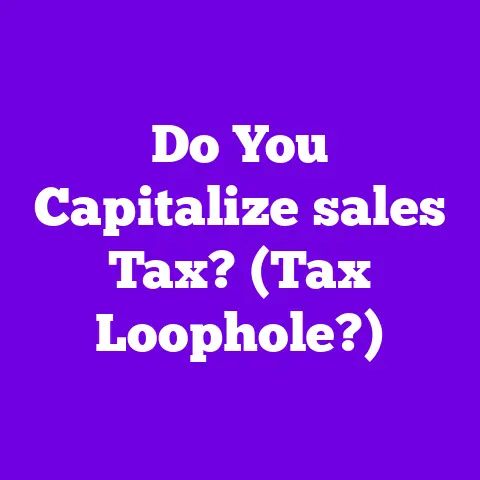When Do Columbus Day sales Start? (Deals drop Soon!)
In a world where we celebrate discovery and exploration, how is it that one of the most infamous figures in history—Christopher Columbus—has become a catalyst for consumer frenzy?
Each year, as the second Monday of October approaches, retailers across the United States gear up for one of the most significant shopping holidays of the fall season.
Columbus Day, a holiday steeped in controversy and shifting perspectives, paradoxically serves as a launchpad for massive retail sales and consumer spending.
While Columbus Day sales mark the onset of significant retail discounts, they are also tied to contentious historical narratives and debates surrounding the commemoration of Columbus.
The juxtaposition of a holiday celebrating exploration with the realities of colonization and its impact on Indigenous peoples presents a fascinating landscape for exploration.
I aim to delve into the significance and evolution of Columbus Day sales, the timing of these events, and the consumer behaviors that accompany them.
II. Historical Context of Columbus Day
Origins of Columbus Day
Columbus Day was established as a federal holiday in the United States in 1937, officially commemorating Christopher Columbus’s landing in the Americas on October 12, 1492.
The day was initially recognized in various states, with the first recorded celebration taking place in New York City in 1792, marking the 300th anniversary of Columbus’s voyage.
The holiday was intended to honor Italian-American heritage and celebrate the contributions of Italian immigrants to American society.
Over the years, Columbus Day became a symbol of national pride, intertwining with the narrative of American exceptionalism.
However, the origins of Columbus Day are not without controversy.
Columbus’s voyages marked the beginning of European colonization in the Americas, leading to the exploitation, enslavement, and death of countless Indigenous peoples.
The legacy of Columbus is complex and multifaceted, as it intertwines themes of discovery, conquest, and colonization.
In contemporary America, many individuals and communities have begun to re-evaluate the significance of Columbus Day, questioning whether it is appropriate to celebrate a figure whose actions contributed to the suffering of Indigenous populations.
Controversies Surrounding Columbus
As I reflect on the evolving perception of Columbus, it is clear that his legacy has been increasingly challenged, particularly in light of Indigenous rights movements.
The late 20th and early 21st centuries saw a growing recognition of the injustices faced by Indigenous peoples, prompting calls to reconsider the celebration of Columbus Day.
Activists argue that the holiday perpetuates a narrative that overlooks the violence and displacement experienced by Indigenous communities as a result of European colonization.
In response to these controversies, some states and municipalities have chosen to replace Columbus Day with Indigenous Peoples’ Day or Native American Day, celebrating the rich history and cultures of Indigenous peoples instead.
This shift signifies a broader movement toward recognizing and honoring the contributions of Indigenous communities, as well as acknowledging the painful legacy of colonization.
As I explore this topic, I am struck by the implications of how we choose to remember our history and the impact it has on present-day society.
Cultural Significance
The cultural significance of Columbus Day varies widely across the United States.
For some Italian-Americans, the holiday serves as a celebration of heritage and identity, a chance to honor the contributions of their ancestors.
However, for many Indigenous peoples and their allies, Columbus Day represents a painful reminder of colonization and the ongoing struggle for justice and recognition.
This dichotomy illustrates the complexities of American identity and the various narratives that coexist within society.
The commercialization of Columbus Day has further complicated its significance.
Retailers capitalize on the holiday to promote sales and discounts, transforming a day of remembrance into a shopping extravaganza.
This paradox raises important questions about consumerism and the values we prioritize as a society.
In the following sections, I will delve deeper into the retail landscape surrounding Columbus Day sales, examining when these sales start and how they have evolved over time.
III. The Retail Landscape and Timing of Sales
When Do Columbus Day Sales Start?
Columbus Day sales typically start in the week leading up to the holiday, with many retailers beginning to advertise their promotions as early as the first week of October.
As a consumer, I often find myself inundated with emails and advertisements highlighting upcoming sales, enticing me to take advantage of the discounts before they expire.
The timing of these sales aligns with the transition into fall, making it an opportune moment for retailers to clear out summer inventory and prepare for the holiday season.
The actual Columbus Day holiday falls on the second Monday of October, and many retailers extend their sales through the weekend leading up to the holiday.
This extended sales period creates a sense of urgency among consumers, encouraging them to shop early and take advantage of limited-time offers.
As I observe the marketing strategies employed by retailers, it becomes evident that the goal is not only to boost sales but also to establish Columbus Day as a prominent shopping event on the retail calendar.
Key Retailers Participating
Numerous major retailers participate in Columbus Day sales, each offering unique promotions and discounts.
For example, home improvement giants like Home Depot and Lowe’s often attract shoppers with deals on seasonal items, tools, and home décor.
Meanwhile, clothing retailers like Macy’s and Target may promote sales on apparel, footwear, and accessories, appealing to consumers looking to refresh their wardrobes for the fall season.
In addition to these traditional retailers, online shopping platforms like Amazon have capitalized on Columbus Day sales by offering exclusive deals and discounts across a wide range of products.
The rise of e-commerce has transformed the way consumers approach shopping during this holiday, allowing them to browse and shop from the comfort of their homes.
This shift in shopping behavior has made it easier for consumers to take advantage of Columbus Day sales, further fueling the consumer frenzy that accompanies the holiday.
Historical Trends
As I reflect on the historical trends surrounding Columbus Day sales, it is clear that the nature of these promotions has evolved over time.
In the past, Columbus Day sales were often seen as a way to clear out summer inventory, similar to Labor Day sales.
However, as consumer behavior has shifted and the demand for seasonal products has changed, retailers have adapted their strategies to cater to evolving preferences.
In recent years, Columbus Day sales have become increasingly competitive, with retailers vying for consumer attention and spending.
The rise of social media and digital marketing has played a significant role in shaping the landscape of Columbus Day promotions, as retailers leverage these platforms to engage with consumers and create buzz around their sales events.
As I explore this evolution, I am struck by the ways in which consumerism has transformed a holiday with complex historical significance into a major retail event.
IV. The Psychology of Holiday Sales
Consumer Behavior
Examining the psychology behind holiday sales, particularly during Columbus Day, reveals fascinating insights into why consumers engage in shopping during this time.
The combination of seasonal changes, promotional discounts, and a sense of urgency creates a perfect storm for consumer spending.
As the weather begins to cool and fall sets in, many consumers feel compelled to prepare for the new season, prompting them to purchase clothing, home goods, and other seasonal items.
Moreover, the anticipation of Columbus Day sales often elicits a sense of excitement among consumers, driving them to seek out the best deals available.
The fear of missing out (FOMO) plays a significant role in consumer behavior during this period, as shoppers rush to take advantage of limited-time offers and exclusive promotions.
I have often found myself drawn into the frenzy, compelled to browse sales and snag deals before they disappear.
Marketing Strategies
Retailers employ various marketing strategies to entice consumers during Columbus Day sales.
Limited-time offers, flash sales, and exclusive discounts are common tactics used to create a sense of urgency and stimulate consumer spending.
Additionally, many retailers use targeted advertising to reach specific demographics, tailoring their promotions to resonate with particular consumer segments.
As I observe these marketing strategies in action, I am struck by the effectiveness of social proof in encouraging consumer behavior.
Retailers often highlight popular products and best-sellers in their advertisements, tapping into the psychological principle that people are more likely to engage in behavior that others are already doing.
By showcasing popular items and emphasizing scarcity, retailers can effectively drive sales and create a sense of urgency among consumers.
Impact of Online Shopping
The rise of e-commerce has fundamentally transformed the way consumers approach Columbus Day sales.
As I navigate the online retail landscape, I notice that many consumers prefer the convenience and accessibility of shopping from home rather than braving crowded stores.
Online retailers often offer exclusive online deals and promotions, making it easier for consumers to find the best prices without the hassle of in-store shopping.
This shift toward online shopping has also changed the dynamics of Columbus Day sales.
Retailers can reach a broader audience through digital marketing efforts, and consumers can easily compare prices across multiple platforms.
As a result, the competition among retailers has intensified, leading to more aggressive promotions and discounts.
In this digital age, the consumer experience has become more streamlined, allowing shoppers to take advantage of Columbus Day sales like never before.
V. Comparison with Other Holiday Sales
Competitive Holidays
As I compare Columbus Day sales with other significant shopping holidays, it becomes evident that Columbus Day occupies a unique position on the retail calendar.
While holidays like Black Friday and Cyber Monday generate massive sales volumes and consumer engagement, Columbus Day sales have historically been more subdued.
However, in recent years, retailers have worked to elevate the significance of Columbus Day sales, creating a competitive landscape that mirrors other shopping holidays.
For instance, Labor Day sales, which occur just a month before Columbus Day, often feature similar promotions and discounts.
Retailers use both holidays to clear out summer inventory and prepare for fall products.
However, Labor Day sales typically generate more consumer interest and spending, as they coincide with the back-to-school season and the transition into fall.
Sales Volume and Trends
When analyzing sales volume generated during Columbus Day compared to other holidays, the disparity becomes apparent.
According to industry reports, Columbus Day sales often lag behind the sales generated during major holidays like Black Friday and Cyber Monday.
While Columbus Day sales can still yield significant revenue for retailers, they do not typically reach the same levels of consumer engagement and spending.
For example, Black Friday sales have consistently ranked among the highest in terms of sales volume, with consumers flocking to stores and online platforms to take advantage of steep discounts.
In contrast, Columbus Day sales have historically been viewed as an opportunity for retailers to promote seasonal items rather than a major shopping event.
As I reflect on these trends, I recognize that consumer preferences and shopping behaviors play a crucial role in shaping the landscape of holiday sales.
Consumer Preferences
Investigating consumer preferences regarding shopping during Columbus Day versus other holidays reveals interesting insights into how shoppers prioritize their spending.
Many consumers view Columbus Day sales as an opportunity to find deals on seasonal items but may not consider it a primary shopping holiday.
In contrast, holidays like Black Friday and Cyber Monday are often seen as must-shop events, with consumers planning their purchases well in advance.
As I examine these preferences, I find that the perception of Columbus Day sales may be influenced by the broader cultural context surrounding the holiday.
The ongoing debates regarding Columbus’s legacy and the commercialization of the holiday may lead some consumers to feel ambivalent about participating in Columbus Day sales.
Over time, as the conversation around Columbus Day continues to evolve, it will be interesting to see how consumer preferences shift in response to changing societal attitudes.
VI. The Future of Columbus Day Sales
Changing Perspectives
As I consider the future of Columbus Day sales, it is clear that the ongoing debates surrounding the holiday’s relevance will impact consumer engagement and retailer strategies.
The growing recognition of Indigenous rights and the calls to reevaluate the celebration of Columbus Day may lead to changes in how retailers approach marketing during this time.
Some retailers may choose to emphasize more inclusive themes in their promotions, aligning their messaging with changing societal values.
Furthermore, as consumers become more conscious of the cultural implications of their spending, it is likely that they will seek out retailers who demonstrate a commitment to social responsibility.
This shift could prompt retailers to adapt their marketing strategies, prioritizing transparency and inclusivity in their campaigns.
As I reflect on these potential changes, I am hopeful that the retail landscape will evolve in a way that honors diverse perspectives and promotes greater understanding.
Potential Alternatives
In light of the changing perspectives surrounding Columbus Day, I have often wondered whether retailers will begin to explore potential alternatives to the holiday.
With many municipalities opting to celebrate Indigenous Peoples’ Day instead, retailers could consider aligning their marketing efforts with this alternative holiday.
By promoting sales that honor Indigenous cultures and histories, retailers could foster a sense of connection and respect within their marketing campaigns.
Moreover, as the holiday shopping calendar continues to expand, retailers may find opportunities to create unique promotions around other fall-themed events, such as Halloween or Thanksgiving.
By diversifying their marketing strategies and embracing a broader range of cultural celebrations, retailers could engage consumers in more meaningful ways while still driving sales.
Retailer Adaptations
As I look to the future, it is clear that retailers will need to adapt to changing consumer sentiments and expectations.
The conversation surrounding Columbus Day and its implications for Indigenous communities calls for a reevaluation of how retailers approach their marketing strategies.
By embracing inclusivity and social responsibility, retailers can build stronger connections with consumers and foster a more positive shopping experience.
In addition, retailers may need to consider the role of digital marketing in shaping their Columbus Day sales.
As e-commerce continues to thrive, retailers will need to prioritize their online presence and engage consumers through targeted digital campaigns.
By leveraging social media and online advertising, retailers can effectively promote their Columbus Day sales while also addressing the complexities surrounding the holiday.
VII. Conclusion
In summary, the exploration of Columbus Day sales reveals a complex interplay between celebration and controversy.
While these sales have become a significant retail event, they are also tied to ongoing debates about the legacy of Christopher Columbus and the impact of colonization on Indigenous communities.
As I reflect on the historical context of Columbus Day, the evolution of retail strategies, and the psychology of consumer behavior, I am struck by the paradox of a holiday that simultaneously inspires consumer frenzy while eliciting critical discussions about our shared history.
As we navigate this landscape, it is essential to consider the implications of our consumer choices and the values we prioritize as a society.
Columbus Day sales may continue to thrive as a retail phenomenon, but the changing perspectives surrounding the holiday call for greater awareness and reflection.
Ultimately, I hope that as consumers, we can engage with these complexities and embrace a more nuanced understanding of the narratives that shape our shopping experiences.
VIII. References
- O’Brien, J. (2020). The History of Columbus Day: A Commemorative Overview. Historical Society Journal.
- Smith, A.
(2021).
Consumer Behavior During Holiday Sales: Insights and Analysis.
Journal of Marketing Research. - National Retail Federation. (2023). Holiday Spending Trends: An In-Depth Look at Columbus Day Sales.
- Indigenous Peoples’ Day Coalition. (2022). The Movement to Reclaim Columbus Day: A Historical Perspective.
- Johnson, L. (2023). The Impact of E-Commerce on Seasonal Shopping Trends. Retail Insights Magazine.






